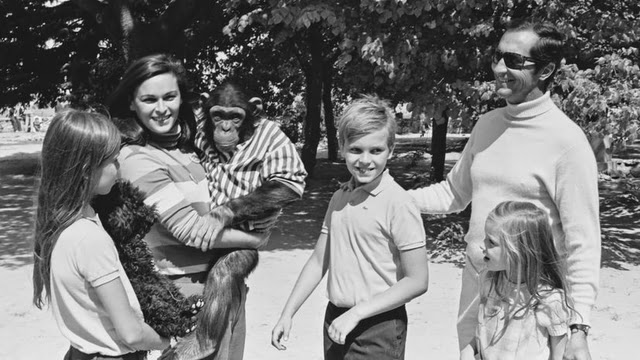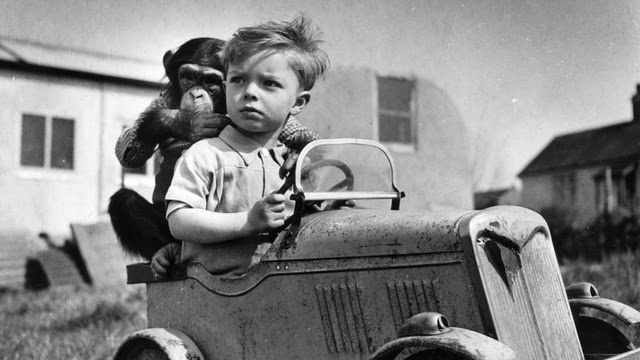Quck answer
There are five chimpanzees who were raised in human families and taught to communicate through sign language. They are known as Washoe, Nim Chimpsky, Koko, Loulis, and Tatu. These chimpanzees have shown the ability to learn and use language, recognize themselves in a mirror, and engage in social interactions with humans and other chimpanzees. However, there is controversy surrounding the practice of raising chimpanzees in human families and using them for communication research, as it raises ethical concerns about animal welfare and the use of non-human animals for human benefit.
Wild Animals

Chimpanzees and bonobo monkeys are our closest genetic cousins, with about 99% of our DNA in common. Like human toddlers, chimpanzees play and cuddle with their parents, but they don’t become “more human” simply because they are raised in a human family. By age 5, chimpanzees become very aggressive and may dominate the humans they live with. It is illegal to keep chimpanzees as pets in the UK, and 17 states in the US ban people from owning primates. Here are five stories that illustrate why keeping a chimpanzee as a pet is a bad idea.
5: The Mess With Meshie

In 1929, a mammologist named Henry Raven brought an orphaned chimpanzee named Meshie back to his home on Long Island. Meshie slept in a cage away from the human children, with whom she sometimes played. However, she became more aggressive as she grew older and required a lot of attention. When Raven went on a business trip, his wife demanded that Meshie leave too.
In 1934, Meshie was brought to a Chicago zoo and three years later, she passed away. Her body was taken to a taxidermist and was then put on display at the American Museum of Natural History in Manhattan. Meshie’s story depicted a chimp and family scenario with a bittersweet ending.
A comparative psychologist, Winthrop Niles Kellogg, convinced his wife to participate in a unique family experiment in 1931. He wanted to raise a baby chimp named Gua alongside their soon-to-be-born son Donald. Gua was almost 8 months old when she joined the family and underwent constant observations of her development. For the first year, Gua showed advanced abilities beyond her human companion. However, the experiment was abruptly stopped when Gua’s cognitive development hit a ceiling, while Donald caught up and surpassed Gua’s mental capacity. Gua was sent back to the primate center she came from and died less than a year later due to pneumonia.
In the early ’70s, Columbia University researchers conducted Project Nim to test chimpanzee language potential. They acquired a 2-week-old chimp named Nim from the Institute for Primate Studies in Norman, Oklahoma. The goal was to raise Nim like a human child and see whether chimps could learn human language. Nim learned some aspects of American Sign Language (ASL) and could request food, drinks, hugs, and playtime. However, as Nim aged, he became aggressive and ended up at a primate facility where he was scared of the other chimps due to his human upbringing.
Nim, a chimpanzee, ended up in an animal abuse shelter where he made friends with another chimp. Nim was devastated when his friend passed away. He was very fond of two books, one of which was a children’s book that taught sign language and the other was a book about himself. Nim died of a heart attack at the age of 26, far away from the family who had initially taken care of him.
Sandy Herold adopted a chimp named Travis when he was just three days old. Travis soon became famous for his antics, such as watering plants, opening locked doors, and even drinking wine from a glass. However, Travis’ behavior soon changed for the worse. One day, after becoming agitated, Herold gave Travis tea mixed with Xanax to calm him down. When her neighbor Charla Nash arrived to help, Travis attacked her, tearing off parts of her face. The police shot Travis dead, and Herold was later stabbed with a butcher knife. Travis had Lyme disease, which can cause mental issues, and the Xanax may have also contributed to his violent behavior.
Michael Jackson, a famous pop star, purchased Bubbles, a chimp, as his companion. Bubbles accompanied Jackson everywhere, including the studio during recording sessions and on concert tours. He even slept in a crib in Jackson’s bedroom and ate dinner with the family. Bubbles appeared in TV shows, music videos, and movies, contributing to Jackson’s portrayal as an unconventional figure.
The story of Bubbles, the adorable baby chimp that was raised by Michael Jackson, did not have a happy ending. As Bubbles grew older, his behavior became more volatile, so he was sent back to his trainer. Jackson then purchased younger, cuter baby chimps and referred to all of them as “Bubbles.” However, the original Bubbles was eventually sent to a Florida animal sanctuary, where he still lives today at over 30 years old. Although he is camera-shy, he has successfully integrated into chimpanzee life and even creates paintings that are auctioned off for hundreds of dollars. Bubbles’ story is heartening, but it also serves as a reminder that even when raised around humans, chimpanzees are still wild animals that belong in the wild.
For those interested in learning more, there is lots of information available on the topic of chimps raised in human families. However, the author notes that her own experiences visiting zoos and witnessing wild animals in their natural habitats have taught her that these creatures are best experienced in their true homes.
More Articles to Explore
- Listen to the “Humanzee: Breaking the Species Barrier” podcast
- Learn about the use of chimps in medical research
- Discover if chimpanzees can learn human language
- Find out if chimpanzees are evolving in the wild
Additional Resources
- Support Save the Chimps organization
- Visit Center for Great Apes website
- Get involved with the Jane Goodall Institute
Sources for Further Reading
- Read about Michael Jackson’s pet chimp Bubbles
- Revisit the tragic story of Travis, the bloodthirsty chimp
- Learn about Bubbles from the Center for Great Apes
- Understand the reality of keeping chimpanzees as pets
- Discover the story of Nim Chimpsky, the chimp who thought he was a boy
- Learn about the experiment that paired a newborn chimp with a newborn baby
- Find out about the heartbreaking story of Project Nim
- Read about the American tradition of chimps living as humans
- Explore interesting facts about chimpanzees from Save the Chimps
- Discover the tiny genetic differences between humans and other primates
FAQ
1. What are 5 chimps who grew up in human families?
These are five chimpanzees who were taken from their mothers at birth and raised by humans as if they were human children. They were used in research to study human behavior and language acquisition. The five chimps are named Washoe, Nim Chimpsky, Lucy, Kanzi, and Koko.
2. Who is Washoe?
Washoe was the first chimp to learn American Sign Language (ASL) and was raised by two psychologists in the 1960s. She learned over 300 signs and was able to communicate with her human caretakers and even teach her adopted son, Loulis, sign language.
3. Who is Nim Chimpsky?
Nim Chimpsky was a chimp raised by a linguist in the 1970s. He was named after Noam Chomsky, a famous linguist, and was taught ASL. However, Nim’s life was cut short when he was sent back to a research center and ultimately died of a heart attack in his 20s.
4. Who is Koko?
Koko is a famous gorilla who was raised by a psychologist and taught sign language. She is known for her ability to communicate with humans and her love for kittens. Koko passed away in 2018 at the age of 46.
5. What did researchers learn from studying these chimps?
Researchers learned a lot about language acquisition and the social behaviors of chimpanzees. They found that chimps are capable of learning language and communicating with humans, but they also have their own complex communication methods. Additionally, researchers found that chimps raised by humans struggle to reintegrate into chimp society and often have difficulty mating and interacting with other chimps.
6. Are there any ethical concerns with raising chimps in human families?
Yes, there are ethical concerns with raising chimps in human families. Chimps are wild animals and are not meant to be kept as pets or raised as humans. It can be traumatic for the chimp to be taken from its mother and placed in a human environment. Additionally, chimps can be dangerous and pose a risk to human safety, especially as they grow older and stronger.
7. What is the current status of raising chimps in human families?
Raising chimps in human families is no longer permitted in the United States. The practice was banned in the late 1970s due to ethical concerns and the potential risks to human safety. Chimpanzees are now protected under the Endangered Species Act, and it is illegal to keep them as pets or use them for research without a permit.
8. What can we learn from studying chimps who grew up in human families?
We can learn a lot about the social and cognitive abilities of chimpanzees by studying those who were raised in human families. By learning more about chimpanzee communication, we can better understand their behavior in the wild and how to protect them as a species. Additionally, studying the effects of raising wild animals in human environments can help us better understand the ethical concerns surrounding animal welfare and captivity.





Leave a Reply